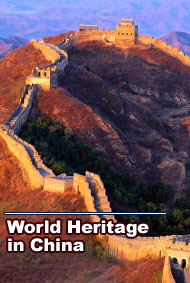
|
|
|
Tibetan Opera
During the 600-year of development, Tibetan people created about 20 traditional repertoires, but unfortunately some of the play scripts have been lost, and only the names, and sometimes the plots, are remembered today. Some village troupes are unable to play the famous Eight Great Classical Tibetan Operas, and other troupes were even disbanded years ago because of the passing away of elder artists, a drain of excellent performers, capital shortage, and the influence of pop dances and songs, all of which resulted in an accelerated phasing-out of Tibetan Opera. To salvage and preserve the threatened unique Tibetan art, a nationwide rescue program has been launched in recent years. Today, Tibetan Opera is becoming increasingly recognized in other parts of China and beyond; it has toured Japan, the United States, and other countries, where it is regarded as a treasure of Chinese ethnic art. Four Schools and Eight Great Classical Operas Today, Tibetan Opera has four major schools as the following first four, and other minor ones, popular in the Tibetan habitations in Tibet Autonomous Region andQinghai Province. 1. The Gyormolung School The Gyormolung School from the Shannan and Lhasa areas is the most recently established school. Specializing in singing, choreography, stunts, and comic effects, it is the most developed among the four schools and has formed a jubilant style with rich and colorful songs and dances. Today, Gyormolung troupes are active in different parts of Tibet and are even known inSichuan Province's Garze region as well as the Southeast Asian countries of India and Bhutan. 2. The Goinba School The Goinba School, originating in Ngamring and Lhaze counties of Southwest China's Tibet Autonomous Region, features high-pitched and sonorous singing, mixed with songs and dances from the Doi area, and traditionalacrobatics. The blue-mask Tibetan Opera was first created by the troupes of the Goinba School. 3. The Xiangba School The Xiangba School from western Tibet combines the influence of local folklore and the Gyanggar School. 4. The Gyanggar School The Gyanggar School is popular in Rinbung, Gyangze, and Xigaze, and is characterized by an ancient, rugged, and solemn style derived from Lamaism. 5. Yalong Zhaxi Xueba in Shannan The school of Yalong Zhaxi Xueba is the representative of the white-mask Tibetan Opera. 6. Qiongjiekazhuo Zhaxi Bindun in Shannan The school of Qiongjiekazhuo Zhaxi Bindun is also famous for its white-mask Tibetan Opera performance. It has a history of more than 600 years. 7. Huangnan Tibetan Opear |